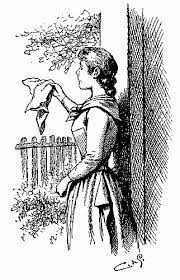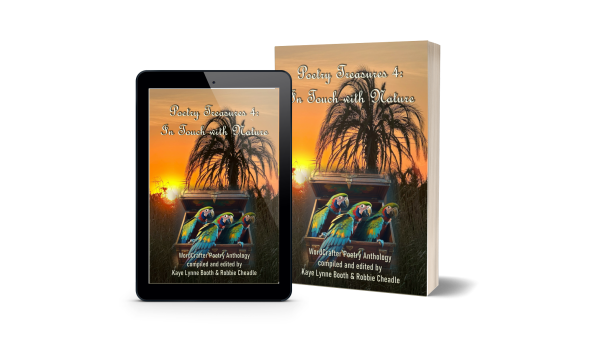Winners of the Wordcrafter “Sarah” Book Blog Tour Giveaway & a Reminder
Posted: May 12, 2024 Filed under: Blog Tour, Books, Fiction, Giveaways, Historical Fiction, Historical Inspiration, Western, Women in History, Women's Fiction, WordCrafter Book Blog Tours, WordCrafter Press | Tags: Giveaway, Historical Fiction, Historical Inspiration, Kaye Lynne Booth, Sarah, Western, Women in the West, Women's Fiction, WordCrafter Book Blog Tours 9 CommentsWe had a great tour for Sarah: Book 2 of the Women in the West Adventure Series, although I would have liked to see a bigger turnout. I enjoyed sharing about myself and about the research and inspiration behind the book with all of you, and I may have made new friends along the way. Thanks to everyone who participated for helping me launch this wonderful book.
The Winners Are…
Each comment on the tour earned an entry in the tour giveaway and a chance to receive a free digital copy of Sarah. So without futher ado…
Drumroll Please.
The winners of the WordCrafter Sarah Book Blog Tour are…
- Author Jan Sikes
- Priscilla Bettis
- Thomastigwikman
Congratulations to the winners!
Please contact me at kayebooth@yahoo.com to receive your free digital copy of Sarah.
Reminder
Today is the last day for tour participants to get a signed print copy of Sarah: Book 2 of the Women in the West Adventure Series. This is an exclusive offer for the tour – my way of saying thanks for your support. Tomorrow it will no longer be available, so get ’em while you can!
__________________________________
Book your WordCrafter Book Blog Tour today!
Dark Origins – The Second Mrs Astor, New York high society and the sinking of the Titanic
Posted: June 28, 2023 Filed under: Books, Dark Origins, Fiction, Historical Fiction, Historical Inspiration, history | Tags: Dark Origins, Historical Fiction, Robbie Cheadle, Shana Abe, The Second Mrs. Astor, Writing to be Read 44 Comments
The Titanic has been in the press again recently and has claimed five more lives. If you are out of the loop about this disaster, you can read about it here: https://www.reuters.com/world/search-intensifies-titanic-sub-with-only-hours-oxygen-left-2023-06-22/.
This disaster prompted me to write about a book I recently read, The Second Mrs Astor, and its dark origins.
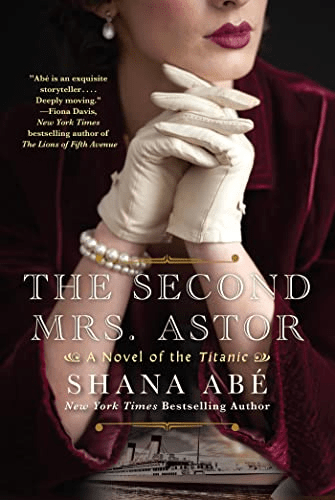
The Second Mrs Astor is a work of historical fiction by Shana Abe. It depicts the romance between the hugely wealthy John Jacob Astor IV and his second and very young wife, Madeleine Force Astor.
There are two aspects to this extraordinarily fine piece of fictionalised history that caught my attention: the snotty and superior attitudes of New York society created by John Astor IV’s mother, Caroline Schermerhorn Astor, and the sinking of the Titanic which claimed the lives of John Astor IV, his valet, and his dog, Kitty. Madeleine Force Astor, who was pregnant at the time, survived the disaster.
A History of New York’s high society in the late 19th century
New York high society started with The Four Hundred, a list of New York’s biggest names which achieved highly-coveted invitations to one of Mrs Caroline Astor’s most lavish parties in her Fifth Avenue mansion. At this time, called the Gilded Age, the Astor family were considered to be Manhattan’s old money – being one of the first Dutch settlers on the island, and they held the prestigious title of a true ‘Knickerbocker’ or a native New Yorker.
Caroline Astor was the ultimate authority of New York society at the time and many high-profile names from America’s 1 percent competed for a seat at her table. Once of these people was Ava Belmont, previously Ava Vanderbilt from the Vanderbilt railroad fortune, who tried to overthrow Caroline Astor thereby creating the most notorious high society rivalry in the late 19th century.
New York high society owned lavish summer homes in Newport, Rhode Island and enormous mansions in the heart of Midtown Manhattan and were known for their extreme extravagance.
Early romance between John Astor IV and Madeleine Force
Madeleine Force was 17 years old when she met John Astor IV. She came from a wealthy family who were part of Brooklyn high-society but was several rungs down the social ladder from the Astor’s.
At the time, John Astor IV was 47 years old and a divorcee with two children. At that time, divorce was considered to be scandalous by the clergy and high society.
Madeleine Force accepted John Astor IV’s marriage proposal despite the open disapproval of his societal circle and the malignant scrutiny of the press.
The early part of the couples marriage made for sad and difficult reading as Madeleine struggles to cope with social ostracism. This all happens against a background of outrageous privilege and extravagance. Both aspects made me angry as a reader.
The pair then went on an extended honeymoon to Egypt and elect to return to New York on the Titanic.


The sinking of the Titanic

Madeleine Astor was five months pregnant when she boarded the Titanic with her husband at Cherbourg, France. They were first class passengers. On the night of the 14th of April 1912, John Astor woke his wife and informed her that the Titanic had hit an iceberg. He reassured her that the damage did not seem serious, but he made her put on a life jacket. Madeleine Astor, her nurse and maid managed to board lifeboat 4 by crawling through the first-class promenade window. John Astor asked if he could accompany his wife as she was pregnant but his request was refused.
John Astor and his valet died in the sinking and his body was recovered on the 22nd of April.
The author’s descriptions of life aboard the Titanic before it struck the iceberg, and of the three hours during which the great ship sank are very compelling. I felt as if I was on that ship experiencing the cold, fear, and loss.
Of the estimated 2,200 people aboard the Titanic more than 1,500 died.
A quote from The Second Mrs Astor:
“The best memory I have about Titanic was that she was so large. So epic. I never felt any swaying or bobbing or turbulence to interfere with my meals, my sensitive appetite, or my slumber. I never felt any sort of vulnerability aboard that ocean liner, right up until the very end. I imagine that’s a blessing, don’t you? Whoever wants to know how it’s all going to end before it actually does? Only poets and madmen, I would think.”
Conclusion
Most people know something about the sinking of the Titanic so I haven’t gone into a lot of detail in this post. I was so captivated by this book, I did my own research to determine how much of the Astor love story was fictionalised and how much was based on truth. It does seem that the Astor’s really were in love and it was a great romance. Madeleine Astor never really recovered from the shock and horror of that fateful night and while her death at the age of 46 is recorded as heart failure, it is believed she died of a drug overdose.
One interesting survival story I came across during my research related to the chief baker on board the Titanic called Charles Joughin.

Ahead of the actual sinking of the Titanic, Charles Joughin imbibed significant amounts of alcohol. When the ship started sinking, the baker stepped off the stern of the vessel. As 1,500 screaming and panicked people froze to death around him, he continued to paddle in the water until dawn when he was picked up by a lifeboat. Within a few days, he was back at work.
Rather a remarkable story.
About Roberta Eaton Cheadle

Award-winning, bestselling author, Roberta Eaton Cheadle, is a South African writer and poet specialising in historical, paranormal, and horror novels and short stories. She is an avid reader in these genres and her writing has been influenced by famous authors including Bram Stoker, Edgar Allan Poe, Amor Towles, Stephen Crane, Enrich Maria Remarque, George Orwell, Stephen King, and Colleen McCullough.
Roberta has two published novels and has horror, paranormal, and fantasy short stories included in several anthologies. She is also a contributor to the Ask the Authors 2022 (WordCrafter Writing Reference series).
Roberta also has thirteen children’s books and two poetry books published under the name of Robbie Cheadle, and has poems and short stories featured in several anthologies under this name.
Roberta’s blog features discussions about classic books, book reviews, poetry, and photography. https://roberta-writes.com/.
Find Roberta Eaton Cheadle
Blog: https://wordpress.com/view/robertawrites235681907.wordpress.com
Twitter: https://twitter.com/RobertaEaton17
Facebook: https://www.facebook.com/robertawrites
Amazon: https://www.amazon.com/Roberta-Eaton-Cheadle/e/B08RSNJQZ5
_____________________________________________________________________________________________
Want to be sure not to miss any of Robbie’s “Dark Origins” segments? Subscribe to Writing to be Read for e-mail notifications whenever new content is posted or follow WtbR on WordPress. If you found it interesting or entertaining, please share.
WordCrafter Mother’s Day Sale: Delilah
Posted: May 8, 2023 Filed under: Adventure, Book Promotion, Book Sales, Books, Fiction, Historical Fiction, Historical Inspiration, Western, Women's Fiction, WordCrafter Press 7 Comments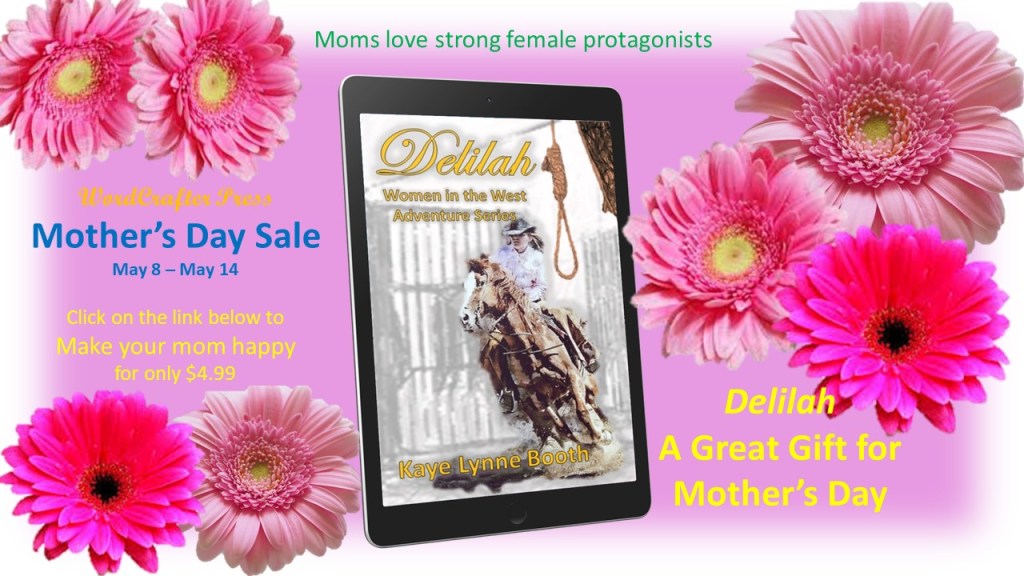
Purchase Link: https://books2read.com/DelilahWIW
Moms love strong female protagonists
Delilah is a woman haunted by her past.
Her homecoming from prison quickly turns into a quest for vengeance when she is brutally raped and left for dead, and her fourteen-year-old ward is abducted. Sheer will and determination take this tough and gritty heroine up against wild beasts of the forest, Indians and outlaws to Leadville, Colorado.
Can the colorful inhabitants of the Colorado mining town work their way into Delilah’s heart, offering a chance for a future she thought she’d lost along with her innocence?
If you like strong and capable female protagonists, you’ll love
Learn more about Deliah and the Women in the West Adventure Series here: https://writingtoberead.com/wordcrafter-quality-writing-author-services/wordcrafter-press/women-in-the-west-adventure-series/
The Mysteries of John Henry “Doc” Holliday
Posted: February 13, 2023 Filed under: Historical Inspiration, research, Western | Tags: Colorado, Doc Holliday, Glenwood Springs, history, Kaye Lynne Booth, Old West, Writing to be Read Leave a comment
Doc Holliday – The Man
John Henry Holliday, was a man of many talents. Born and raised in Georgia, he practiced dentistry, earning him the handle of “Doc”. He contracted tuberculosis while caring for his ailing mother before her death, and eventually had to give up his practice, as no one wanted to let “a lunger” work on their mouth for fear of contracting the disease. He came west, trying to take up dentistry, but supplementing his income with gambling, often dealing cards at the local faro tables. He was a heavy smoker, and a heavy drinker, with a hot temper and considerable skill with a gun, earning him a reputation as a notorious outlaw andl killer, as well.
He left his mark in frontier towns such as Dodge, Kansas; Tombstone Arizona; and Leadville, Colorado, but he spent his final days in Glenwood Springs, Colorado.
Doc Holliday’s Final Days
John Henry Holliday traveled to Glenwood Springs from Leadville, where he had resided for the previous year and a half, to see if the mineral baths, which at that time were scattered up and down the canyon, could improve on his failing health, as he struggled with tuberculosis, which he’d contracted while caring for his ailing mother, who died of the same disease.
Holliday worked at one of the saloons in town as a faro dealer for a short time, probably about a month, following his arrival in Glenwood Springs, but he was soon too ill to keep the job. He did a few odd jobs to pay the rent on his room, but was eventually too sick to climb the stairs to his second story lodgings at the Hotel Glenwood, (which burnt in 1945), so thereafter was confined to bed. The photo below is believed by some to be Doc in his final days at the Hotel Glenwood. It is displayed in the Doc Holliday Museum, in the basement of Bullock’s western store, which now sits where the hotel was in 1887.

Too sick to earn a wage, Doc may have found himself on the street were it not for his friendship with Walter Deveroux, one of the town’s leading citizens, who would later build the hot springs pool. Deveroux stood by Doc in his last days, bringing nourishment when he could no longer leave his second story room, and contacted Doc’s long time companion, Kate Elder, (Mary Katherine Harony-Cummings), also known as Big Nose Kate, requesting that she come to Glenwood Springs and help to care for the ailing Doc. (The same Big Nose Kate who had traveled with Doc for several years and had saved him from a mob in Fort Griffin, Kansas, ten years earlier, in 1877).
Doc’s Final Resting Place
There is some question about Doc’s final resting place. According to signage at the beginning of the trailhead for the Linwood Cemetary, the organization of the hillside cemetery, which requires a steep walk up the trailhead to reach, was rather haphazard to begin with, and graves were placed wherever a spot could be found. Then heavy rains came along and washed the cemetery and many of the graves and caskets down the hillside, which then had to be re-interred. It is said that it was such a mess that no one could tell who was who, and so graves were mismarked and some headstones may not actually have anything lying beneath them.
Others claim that he was buried in the pauper’s cemetery which lies above the main cemetery, Potter’s Field, and still others claim his body was shipped back to Georgia, where his family buried him in an unmarked grave. Any of these stories could be true: Doc died penniless, so may have been buried in an unmarked grave in Potter’s Field; or his friends in Glenwood Springs, who assisted him during his last days could have paid for his burial; or his family could have paid to have his remains shipped back to Georgia. Vandalism may have caused these various claims to spring up as efforts in misdirection, and only those present in Glenwood Springs at the time would know which is true, and they aren’t telling.
There have been three different headstones for Doc Holiday’s grave in Glenwood Springs, Colorado. The one above is supposedly the original grave marker, which had to be removed due to vandals. It can be found today on the floor of Bullock’s western store, where Doc spent his last days in one of the rooms above. Below is the headstone which is currently found in the Linwood cemetery. In the hillside cemetery the current headstone is protected from vandalism by a barred fence which look a little like a jail cell. Doc was never a friend of the law, so perhaps this is a fitting end for the notorious gambler.
Doc may have died penniless, but he was wealthy in friendships. Kate did come to care for him, gathering firewood to sell from the nearby hills, to help to pay his expenses, and caring for him when he no longer had the strength to care for himself. It’s not every man who had friends of such devotion. Kate arranged to send Doc’s dental equipment and other belongings back east to his family members, although they were pillaged before they arrived at their destination. It says a lot for Doc’s character that he had loyal friends like Kate and Deveroux.
John Henry Holliday died in Glenwood Springs on November 8, 1887 at the age of 36.
Sources Cited
Not only did the mineral baths not improve his health, they most likely exacerbated it, with the moist air surrounding the pools, and he died less than two months later, penniless. In the Doc Holliday Museum, located in the basement of Bullock’s Store, they display the picture below, surmising that it might be Doc in his final days, taken in his second story room in the Hotel Glenwood above, which was the although they do not state this as fact.
Carla Jean Whitley (3/10/2017) To Doc From Kate – But Who Was Kate? Post Independent. Retrieved from https://www.postindependent.com/news/local/to-doc-from-kate/
Maggie Van Ostrand (2017) Katie Elder a.k.a. Big Nose Kate, Her True Story. Goose Flats Graphics & Publishing. Retrieved from Southern Arizona Guide: https://southernarizonaguide.com/katie-elder-her-true-story-by-maggie-van-ostrand/
Joseph A. Williams. The Real Story of Doc Holliday and Big Nose Kate. Old West. Retrieved from https://www.oldwest.org/doc-holliday-big-nose-kate/
Big Nose Kate – Doc Holliday’s Sidekick. Legends of America. Retrieved from https://www.legendsofamerica.com/we-bignosekate/
(2/28/2022). Couples with History: Glewood Springs Loves Stories. Glenwood Springs Blog. Retrieved from https://visitglenwood.com/blog/2022/02/couples-with-history-glenwood-springs-love-stories/
Doc Holliday in Glenwood Springs. Glenwood Springs blog. https://visitglenwood.com/history/doc-holliday-in-glenwood-springs/
The True Story of Katie Elder. Notes from the Frontier. Retrieved from https://www.notesfromthefrontier.com/post/the-true-story-of-katie-elder
Doc Holliday: A High Roller Brought Low. Hotel Colorado blog. Retrieved from https://www.hotelcolorado.com/blog/doc-holliday-a-high-roller-brought-low
Death Spot of Doc Holliday. Roadside America. Retrieved from https://www.roadsideamerica.com/story/35312
Patrick McGuire (1/24/2022) Where is Doc Holiday Buried? Colorado Uncovered. Retrieved from https://www.uncovercolorado.com/doc-holliday-grave-location/
_________________________________________________________________________

For Kaye Lynne Booth, writing is a passion. Kaye Lynne is an author with published short fiction and poetry, both online and in print, including her short story collection, Last Call and Other Short Fiction; and her paranormal mystery novella, Hidden Secrets. Kaye holds a dual M.F.A. degree in Creative Writing with emphasis in genre fiction and screenwriting, and an M.A. in publishing. Kaye Lynne is the founder of WordCrafter Quality Writing & Author Services and WordCrafter Press. She also maintains an authors’ blog and website, Writing to be Read, where she publishes content of interest in the literary world.
__________________________________________________________________
Want exclusive content? Join Kaye Lynne Booth & WordCrafter Press Readers’ Group for WordCrafter Press book & event news, including the awesome releases of author Kaye Lynne Booth. She won’t flood your inbox, she NEVER will sells her list, and you might get a freebie occasionally. Get a free digital copy of her short story collection, Last Call and Other Short Fiction, just for joining.
Dark Origins: African myths and legends – The Zulus Part 3 #Zulucreationmyth #sausagetree
Posted: June 22, 2022 Filed under: Dark Origins, Historical Inspiration, Mythology and Legend | Tags: African Legend, Dark Origins, Roberta Eaton Cheadle, South African History, Spirits of the West, Writing to be Read 38 Comments
The Zulu Creation Myth
The Zulu myth on the creation of mankind and the world is as follows:
The Ancient One, known as Unkulunkulu, came from the reeds and from them he created the people and the cattle. Unkulunkula created the mountains, streams, and all creatures, both wild and domesticated.
He taught the Zulu’s how to hunt, how to make fire, and how to grow food.
You can listen to me read the Zulu myth: The Story of Creation here:
The Sausage Tree and Zulu mythology
When I visited Ghost Mountain in Kwa-Zulu Natal in March 2021, I learned about the iconic Sausage Tree which grows in this area.

This tree’s incredible sausage-shaped fruit weighs between 5 and 10 kilograms and can get to 3 feet in length. The unripe fruit is poisonous, especially to humans, but the skin is ground to a pulp and used externally for medicine. It is used to cure skin ailments especially skin cancers. The fruit is also burned to ashes and pounded using a mortar with oil and water to make a paste to apply to the skin. The rind of the fruit is also used to aid the fermentation of local brews.
The sausage tree has beautiful blood-red to maroon flowers with an unpleasant (to humans) smell. It’s scent attracts its main pollinator, the Dwarf Epauletted Fruitbat.
Many animals feed on the flowers when they drop, including impala, duiker, bush pigs, and lovebirds.
Zulu myth about the sausage tree
During our stay at Ghost Mountain Lodge, we went on a game drive to a nearby private game park. The ranger told us that the sausage tree is the subject of an age-old myth that it has the power to enhance libido and sexual prowess in both humans and animals. The sausage tree is also believed to hold the answer to impotence. These ‘cures’ are prepared by traditional doctors and are shrouded in mystery.


Did you know?
Did you know that I have two short stories in the WordCrafter Press anthology, Spirits of the West, that are based on South African history?
If you would like to read and review a copy, please email me at sirchoc[at]outlook[dot]com.
Here is a short extract from my story, The Ghost in the Mound:
“Grasping the baby tightly, Sara clambers out from under the wagon and sits back on her heels next to the wheel. After passing her the baby, Susanna crawls out, followed by Clara. They both kneel beside her.
In front of them, through the smoky haze, the blurred and agitated forms of the adults move frantically; fire, reload, fire, reload. The noise is immense.
Pointing to the huge baobab tree which stands directly in front of them, Sara whispers to the two younger girls.
“You need to run straight past Mama and get behind that tree. Run as fast as you can, I’ll be right behind you. Are you ready? One, two, go!”
The three girls lunge forward and begin to run, their faces drawn and tight with stress and their eyes fixed on the prominent tree. Their swiftly moving feet are accompanied by the crashing of the guns and the shrieks and yells of the enemy.
As the tree draws closer, Sara can see the detail of every leaf and the smooth shininess of its bottle-shaped trunk. The threesome circle behind the great trunk, gasping for breath. Sara drops to her knees;
Kobus is heavy and her chest throbs.
The tree’s heavy, white flowers are already starting to fade, and a few have already turned brown and fallen to the ground. Their sweet fragrance has a cloying smell of decay. Sara looks around, considering their options.
Where can we hide?
Her eyes settle on the termite mound, standing proud and tall, surrounded by veld. The yellowy green grass between their position under the tree and the mound is tall and thick, offering protection from
searching eyes.”

About Roberta Eaton Cheadle

Roberta Eaton Cheadle is a South African writer and poet specialising in historical, paranormal, and horror novels and short stories. She is an avid reader in these genres and her writing has been influenced by famous authors including Bram Stoker, Edgar Allan Poe, Amor Towles, Stephen Crane, Enrich Maria Remarque, George Orwell, Stephen King, and Colleen McCullough.
Roberta has short stories and poems in several anthologies and has two published novels:
* Through the Nethergate, a historical supernatural fantasy; and
* A Ghost and His Gold, a historical paranormal novel set in South Africa.
Roberta has ten children’s books published under the name Robbie Cheadle.
Roberta was educated at the University of South Africa where she achieved a Bachelor of Accounting Science in 1996 and a Honours Bachelor of Accounting Science in 1997. She was admitted as a member of The South African Institute of Chartered Accountants in 2000.
Roberta has worked in corporate finance from 2001 until the present date and has written seven publications relating to investing in Africa. She has won several awards over her 20-year career in the category of Transactional Support Services.
Find Roberta Eaton Cheadle
Blog: https://wordpress.com/view/robertawrites235681907.wordpress.com
Twitter: https://twitter.com/RobertaEaton17
Facebook: https://www.facebook.com/robertawrites
Amazon: https://www.amazon.com/Roberta-Eaton-Cheadle/e/B08RSNJQZ5
_____________________________________________________________________________________________
Want to be sure not to miss any of Robbie’s “Dark Origins” segments? Subscribe to Writing to be Read for e-mail notifications whenever new content is posted or follow WtbR on WordPress. If you found it interesting or entertaining, please share.
Treasuring Poetry 2022 – Robbie Cheadle discusses the War Poets
Posted: January 19, 2022 Filed under: Historical Fiction, Historical Inspiration, Poetry, Treasuring Poetry, Writing | Tags: Poetry, Robbie Cheadle, Siegfried Sassoon, Treasuring Poetry, Vera Brittain, Walt Page, Writing to be Read 50 Comments
The poet I was hoping to feature today, Walt Page, has been unwell and was unable to participate. I decided that I would share a beautiful poem of Walt’s today called Sometimes When it Rains. Walt told me I was the inspiration for this poem and I love it.

Sometimes when it rains
Sometimes when it rains
she loves to go walking
snuggled inside
her warm rain jacket
Walking in the rain
is a sanctuary for her
a time when she can
create her poetry
it is her time alone
to be inspired
she loves being with her family
and she loves creating her poetry
those of us who follow her poetry
are blessed with her friendship
we know she is probably out walking
and we look forward to her new poems
~The Tennessee Poet~
©Walt Page 2020 All Rights Reserved
Walt is currently on a sabbatical from writing poetry, but he has years of wonderful poetry available to readers of his blog here: https://waltswritingsonlife.wordpress.com/
For the past 14 months, I have been deeply down a WW1 hole, reading book after book about this devastating and world-changing war.
My interest in books about WW1 is due partly to my general fascination with war and partly as research for my work in progress, The Soldier and the Radium Girl, a novel set in the USA and France from 1917 to October 1939.
My interest in war poetry was sparked by Sally Cronin from Smorgasbord Blog Magazine who shares poems by the war poets during the week leading up to Remembrance Day.
This year, Sally shared poems by two specific war poets which interested me so much, I read up about them and subsequently read one of each of their works.
Siegfried Sassoon

This is what Wikipedia says about Siegfried Sassoon:
“Siegfried Loraine Sassoon CBE MC (8 September 1886 – 1 September 1967) was an English war poet, writer, and soldier. Decorated for bravery on the Western Front, he became one of the leading poets of the First World War. His poetry both described the horrors of the trenches and satirised the patriotic pretensions of those who, in Sassoon’s view, were responsible for a jingoism-fuelled war. Sassoon became a focal point for dissent within the armed forces when he made a lone protest against the continuation of the war in his “Soldier’s Declaration” of 1917, culminating in his admission to a military psychiatric hospital; this resulted in his forming a friendship with Wilfred Owen, who was greatly influenced by him. Sassoon later won acclaim for his prose work, notably his three-volume fictionalised autobiography, collectively known as the “Sherston trilogy”.”
Siegfried Sassoon features as a main character in Regeneration by Pat Barkers. I had just finished this book when I read Sally’s post about him: https://smorgasbordinvitation.wordpress.com/2021/11/11/smorgasbord-blog-magazine-poetry-rewind-in-remembrance-the-war-poets-siegfried-loraine-sassoon-cbe-mc-by-sally-cronin/
You can read my review of Regeneration here: https://www.goodreads.com/review/show/4354087186
I elected to read The War Poems by Siegfried Sassoon available from Amazon here: https://www.amazon.com/gp/product/0571202659/

Over the past few years, I have read the odd poem by Siegfried Sassoon and found them to be very moving. These poetic encounters were usually on Poppy Day when the world commemorates both WW1 and WW2. Although I had a high level appreciation of this war and knew about trenches and a little of the horror, I had never studied WW1 or read much about it outside of these Poppy Day poems.
Over the course of the last 14 months, I have been extensively researching WW1 and have read a number of books detailing life for both the soldiers in France and for the civilian populations at home. My research has covered the British, French, South African, and American perspectives of WW1. These books, which included All Quiet on the Western Front by Erich Maria Remarque, Farewell to Arms by Ernest Hemmingway, Testament of Youth by Vera Brittain, and Regeneration by Pat Barker, really opened my eyes about the dreadful conditions in the trenches, the filth, the rats, the dead bodies, and the fear, as well as the heartbreak of losing a generation of young men. As a result of all this reading and my immersement in life during this time of worldwide conflict, my appreciation and understanding of Sassoon’s war poetry grow and I decided to read it all.
Reading this book was an excellent investment of my time and energy. Siegried Sassoon’s words are powerful and hard-hitting, striking right to the core of the war time experiences of these young men – their hopes and dreams dying around them along with their friends and leaders. This is a book that all youngers should read, after being given some context to WW1, so that this time can be remembered and timeous steps taken to prevent a re-occurrence at any future date. Remembering history and the mistakes of mankind, are best weapons against complacency.
The poem that moved me the most in this collection was The death-bed. You can listen to me reading it here:
Vera Brittain

What Wikipedia says about Vera Brittain:
“Vera Mary Brittain (29 December 1893 – 29 March 1970) was an English Voluntary Aid Detachment (VAD) nurse, writer, feminist, socialist[1] and pacifist. Her best-selling 1933 memoir Testament of Youth recounted her experiences during the First World War and the beginning of her journey towards pacifism.”
You can read more about Vera Brittain here: https://en.wikipedia.org/wiki/Vera_Brittain
I recently read Vera’s memoir Testament of Youth and posted by review to Roberta Writes here: https://robertawrites235681907.wordpress.com/2022/01/19/roberta-writes-book-review-testament-of-youth-by-vera-brittain/
In conclusion
Finally, I am sharing one of my poems about a different kind of silent war. One that can still be contained and prevented from destroying our planet through carbon emissions and overuse of plastic if we reign it in. A compromise can be reached between profits and sustainability.
The Corporate Giant
It rears upwards
into the blue sky,
a monstrosity
of reflective glass, and
shiny stainless steel
towering over
the ant-sized people
who scurry about
in its imposing shadow.
***
An emotionless giant
it is bereft of a soul,
It feeds on small businesses
corner cafes, fruit and nut shops
independent butcheries, bakeries,
confectionaries and cake shops.
Even book sellers and
small stationers
are swallowed whole
disappearing into the gaping maw
of the corporate giant.
***
It shreds and ingests
taking the sustenance it seeks
spitting out the bones
independence and individuality
creativity and the unique
mere entrails, unwanted and discarded.
***
It stamps on difference
in its pursuit of profits
imperfections and blemishes
an unacceptable blight
on a perfect track record.
***
What remains will finally
emerge as a mirror
reflecting the sameness
uniformity and consistency
it holds so dear.
***
Providing its market
with the conformity
and rigidness
that has taken over
and turned the world grey.
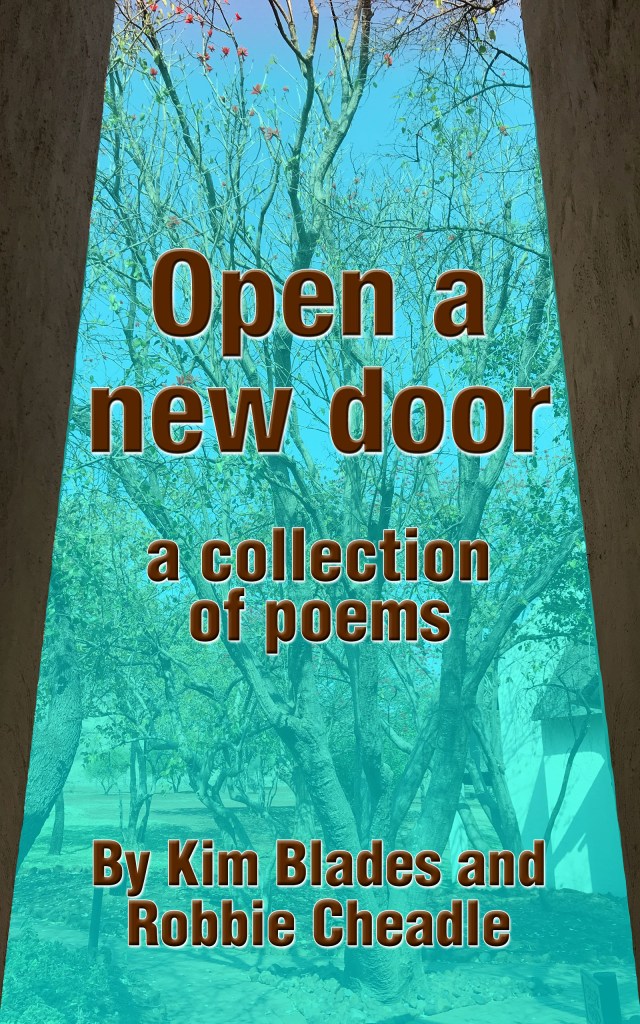
About Robbie Cheadle

Robbie Cheadle is a South African children’s author and poet with 9 children’s books and 2 poetry books.
The 7 Sir Chocolate children’s picture books, co-authored by Robbie and Michael Cheadle, are written in sweet, short rhymes which are easy for young children to follow and are illustrated with pictures of delicious cakes and cake decorations. Each book also includes simple recipes or biscuit art directions which children can make under adult supervision.
Robbie has also published 2 books for older children which incorporate recipes that are relevant to the storylines.
Robbie has 2 adult novels in the paranormal historical and supernatural fantasy genres published under the name Roberta Eaton Cheadle. She also has short stories in the horror and paranormal genre and poems included in several anthologies.
Robbie writes a monthly series for https://writingtoberead.com called Growing Bookworms. This series discusses different topics relating to the benefits of reading to children.
Robbie has a blog, https://robbiesinspiration.wordpress.com/ where she shares book reviews, recipes, author interviews, and poetry.
Find Robbie Cheadle
Blog: https://www.robbiecheadle.co.za/
Blog: robbiesinspiration.wordpress.com
Twitter: BakeandWrite
Instagram: Robbie Cheadle – Instagram
Facebook: Sir Chocolate Books
______________________________________________________________________________________________
Want to be sure not to miss any of Robbie’s “Treasuring Poetry” segments? Subscribe to Writing to be Read for e-mail notifications whenever new content is posted or follow WtbR on WordPress. If you found it interesting or entertaining, please share.
Saying Good-bye to “Delilah” – But not for long
Posted: December 29, 2021 Filed under: Adventure, Books, Historical Inspiration, Western, WordCrafter, WordCrafter Press | Tags: Delilah, Kaye Lynne Booth, New release, western adventure, WordCrafter Press 5 CommentsAfter long deliberation I have come to a rather painful decision. After April 2022, Delilah will no longer be available through any book outlet. Delilah has been on the virtual shelves for five years now, and really hasn’t had many sales, even after adding forwards from authors Robert Hanlon and Paul L. Thompson, and a new cover and new back cover matter, so I’ve decided not to renew my contract with Dusty Saddle Publishing.
Originally, the story I wrote for Delilah was very different. I made major changes to the plot after the first draft was complete, based on feedback from a beta reader, which at the time I felt was valid, so I basically rewrote more than half of the story. The Delilah that I published, was not the same story that I originally conceived. Upon re-reading to see if I could determine why it might not be selling, I discovered several places where the story feels forced, where I was trying to make the events fit into the amended plot line and it was like trying to fit a round peg into a square whole. One of things authors must strive to accomplish is to write a good story that draws readers in and then provides a satisfying ending, so as not to disappoint readers, delivering on the promise. I think I’ve failed to do that with Delilah, leading to sales not being as good as I had hoped.
The good news is, although Delilah will be disappearing from the virtual shelves for now, I’m going to go back to that original story, at least as much as I can, as I resurrect her and revise this tale into the one I originally wanted to tell. Before the end of 2022 I plan to re-release Delilah in a revised edition complete with new cover (above) and ‘blurbage’. If you already read Delilah and liked it, the revised edition will be even better. It will be a story that is true to character and creator; the story that originally should have been and almost was, will be again. So watch for this new and improved western adventure to be released in June.
_________________________________________
Like this post? Let me know in the comments. You can be sure not to miss any of Writing to be Read’s great content by subscribing to e-mail or following on WordPress. If you found this content helpful or entertaining, please share.
Dark Origins – A Christmas Carol by Charles Dickens
Posted: December 22, 2021 Filed under: Classics, Dark Origins, Fiction, Historical Inspiration | Tags: A Christmas Carol, Charles Dickens, Classic Literature, Dark Origins, Robbie Cheadle, Writing to be Read 35 Comments
In the spring of 1843, Charles Dickens read a government report on child labour in the United Kingdom. The report, compiled by a journalist friend of Charles Dickens, comprised of a series of interviews with working children. It detailed the long hours, crushing work, and poor conditions suffered by these children.
The new and heartless attitude towards child labour was a result of three things:
- an increase in the population by 64% in 30 years;
- workers leaving the countryside and crowding to the cities in search of work; and
- the demise of cottage industries and there replacement with mundane and menial labour in factories.
Employers thought of the workers as commodities whose labour was measured purely on output and productivity.
There was a lot of controversy among the wealthy classes and the clergy as to whether assistance should be extended to the poor. A lot of people were of the opinion that people were poor due to their own laziness and malingering and that giving help would exacerbate these tendencies.
The work houses of the day split up families, provided minimal food, and extracted hard labour from its occupants, including children, in an effort to discourage the poor from seeking help.
I am reminded at this point of the song Food, Glorious Food from the musical Oliver based on the book by Charles Dickens:
Rev. Thomas Malthus advocated letting the poor go hungry to decrease the population. His view was that it was better to let the poor starve to “decrease the surplus population”.
Charles Dickens’ response was to write the novella, A Christmas Carol, which eloquently expressed his views on employer responsibilities towards workers.
If you don’t know the story of A Christmas Carol, this is a very brief overview:
The story opens with Ebenezer Scrooge sitting in his counting house on Christmas Eve. His clerk, Bob Cratchit, is sitting shivering in the anteroom because Scrooge won’t spend any money on heating. He turns down his nephew, Fred’s, invitation to a Christmas party and chases away two men collecting money for charity. At the end of the day, he returns to his cold, dark home.
After Scrooge has retired for the night, he is visited by the ghost of his dead partner, Jacob Marley. Marley is weighed down by heavy chains and is destined to make his way through the afterlife dragging them after him because of his mean-spirited and selfish life.
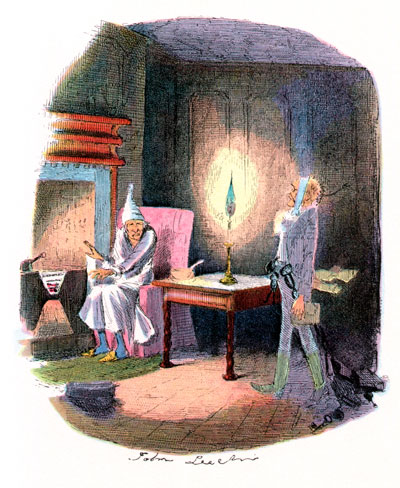
Marley tells Scrooge that he will be visited by three ghosts that night, the ghosts of Christmas Past, Present, and Future. The ghosts show Scrooge where he made mistakes in his past life due to choosing money over love and life, how his clerk and the Cratchit family are suffering because of his present day meanness, and show him a lonely future death. Scrooge is offered, and takes, an opportunity to change his ways and find redemption.
If you are interested in listening to A Christmas Carol beautifully read by Stephen Humphreys, you will find the links on Rebecca Budd’s blog: Clanmother: https://clanmother.com/2021/12/07/stephen-humphreys-reads-a-christmas-carol/
Wishing you all a Merry Christmas if you celebrate or Happy Holidays.
Although I cannot compare my take on Victorian child labour to Charles Dickens’ brilliant works, I have written several times about this and I thought I would share this short extract from my book, Through the Nethergate, about a serving girl in a tavern in Bungay in 1589.
“The rich, amber fluid flowed into the waiting tankard, in striking contrast to the damp, darkness of the barrel filled cellar.
The small, frail girl stood with the tankard in her trembling hand. She was hungry, thirsty and cold. She hadn’t had anything to eat or drink since last night’s frugal supper of leftovers in the Inn’s kitchen. A wave of dizziness washed over her as she contemplated the drink. Its golden depths seemed to entrance her as she lifted it to her lips.
At least the kitchen was warm, she thought, remembering the delicious heat of the enormous, roaring fireplace. The kitchen was a much better place to steal a moment of rest than this freezing cold
cellar, in the bowels of the building.
The strong, rich taste of the ale brought a smile to the girl’s pale face. She greedily drained the tankard, closing her eyes and allowing a feeling of well-being to permeate through her skinny, undernourished body. The girl, called Lizzie, worked as a servant at the pub and she was twelve years old.
She knew she should be grateful for the job, but it was hard to forgive the heavy-handed punishments metered out to her by Will, the owner of the establishment.
A rough hand grasped her shoulder, its thick fingers digging viciously into her flesh.
“What have you done?” the loud, grating voice of Will blasted through her euphoria.
Lizzie jerked with fear and the tankard fell from her fingers, clattering to the stone floor before rolling away.
She looked up into piggy eyes staring out of a fat and well-fed face. Will’s usually florid complexion looked even ruddier and coarser than usual.
“Why, you little thief,” continued Will. “You know what we do with thieves in this Inn.”
A short while later, Lizzie found herself chained to the wall of the cellar. Her pleas and cries for mercy had fallen on deaf ears as Will, filled with righteousness and piety at her ungodly action, attached the manacles to her wrists and ankles.”
__________________________________________________________________________________________________________
Want to be sure not to miss any of Robbie’s “Dark Origins” segments? Subscribe to Writing to be Read for e-mail notifications whenever new content is posted or follow WtbR on WordPress. If you found it interesting or entertaining, please share.







